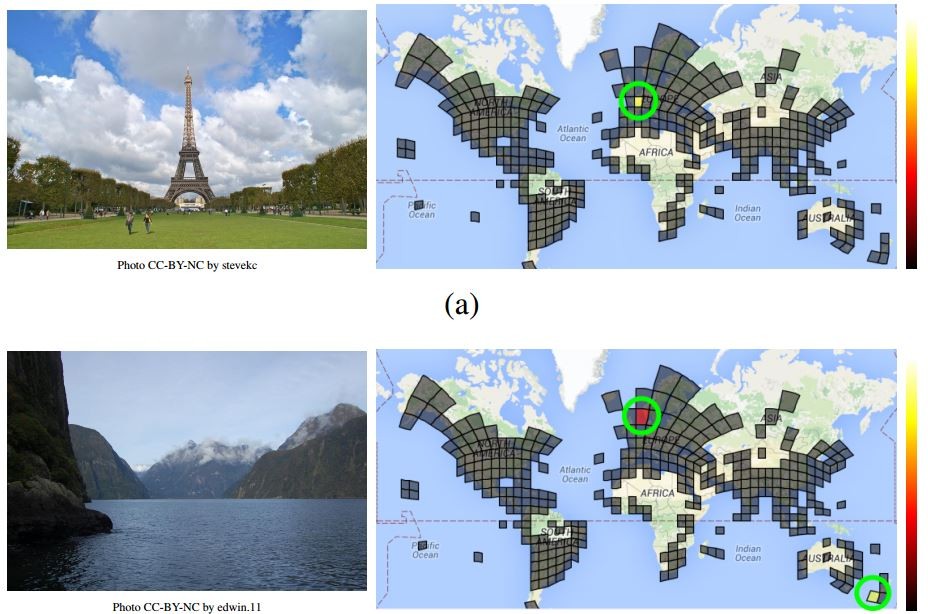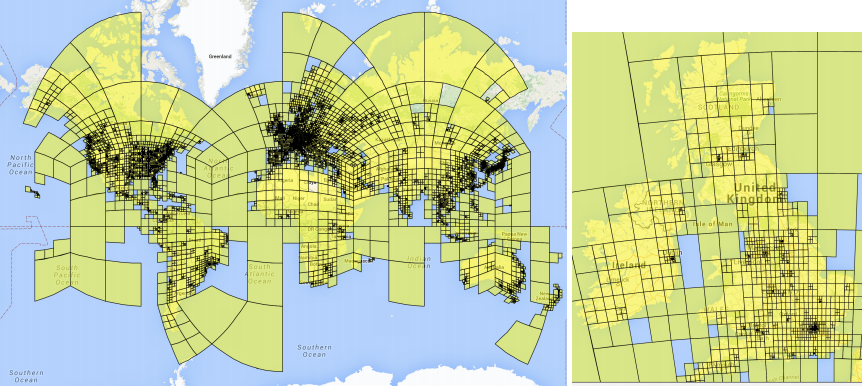Google showed a neural network capable of recognizing a country from a photo (as well as a city and a street), even if the photo was taken in a house
It is easy to find out where the photo was taken, if in the background - the Eiffel Tower, the Taj Mahal, St. Peter's Cathedral, the Lincoln Memorial or Red Square. Developers from Google went ahead and made a neural network capable of finding a place from a photo, even if it was taken indoors.

People can use not only sights to understand where the picture is taken. The place can be determined by the dish in the restaurant, by the direction of traffic, by the cow on the street, the architecture of the buildings and the combination of all these factors. And what is a car capable of?
The developers of PlaNet technology have divided most of the land into 26,000 zones of various sizes, depending on the number of photographs taken in a particular area. The big cities got more “cells”, as more photos were taken in them, while in the countryside the “cells” were larger. Seas, oceans, polar zones missed.
')

A database of 126 million photographs from the Internet was used along with their EXIF data. 91 million photos were used to train the neural network, and the remaining 34 million were used to evaluate its work.
2.3 million geo-targeted images from Flickr were used to test the effectiveness of the neural network. 3.6% of images PlaNet learned up to the street, 10% - up to the city. The country determined the neural network in 28.4% of cases, and the continent - in 48%.
This result was compared to the capabilities of a dozen travelers with the help of the game GeoGuessr.com , in which you guess the place on Google Street View. PlaNet beat people with an average error of 1131.7 kilometers. People were mistaken an average of 2320.75 kilometers.
According to one of the main researchers, Tobias Weyand, the advantage of the machine is that the neural network has "seen" much more than any living person who has traveled the world all his life.
The developers went further and began to work with photos that were taken on the premises. You can recognize them when the photo is part of the album - the machine looks through the albums completely and searches for the most specific images taken in the same place.
The neural network itself takes only 377 megabytes.

People can use not only sights to understand where the picture is taken. The place can be determined by the dish in the restaurant, by the direction of traffic, by the cow on the street, the architecture of the buildings and the combination of all these factors. And what is a car capable of?
The developers of PlaNet technology have divided most of the land into 26,000 zones of various sizes, depending on the number of photographs taken in a particular area. The big cities got more “cells”, as more photos were taken in them, while in the countryside the “cells” were larger. Seas, oceans, polar zones missed.
')

A database of 126 million photographs from the Internet was used along with their EXIF data. 91 million photos were used to train the neural network, and the remaining 34 million were used to evaluate its work.
2.3 million geo-targeted images from Flickr were used to test the effectiveness of the neural network. 3.6% of images PlaNet learned up to the street, 10% - up to the city. The country determined the neural network in 28.4% of cases, and the continent - in 48%.
This result was compared to the capabilities of a dozen travelers with the help of the game GeoGuessr.com , in which you guess the place on Google Street View. PlaNet beat people with an average error of 1131.7 kilometers. People were mistaken an average of 2320.75 kilometers.
According to one of the main researchers, Tobias Weyand, the advantage of the machine is that the neural network has "seen" much more than any living person who has traveled the world all his life.
The developers went further and began to work with photos that were taken on the premises. You can recognize them when the photo is part of the album - the machine looks through the albums completely and searches for the most specific images taken in the same place.
The neural network itself takes only 377 megabytes.
Source: https://habr.com/ru/post/390903/
All Articles